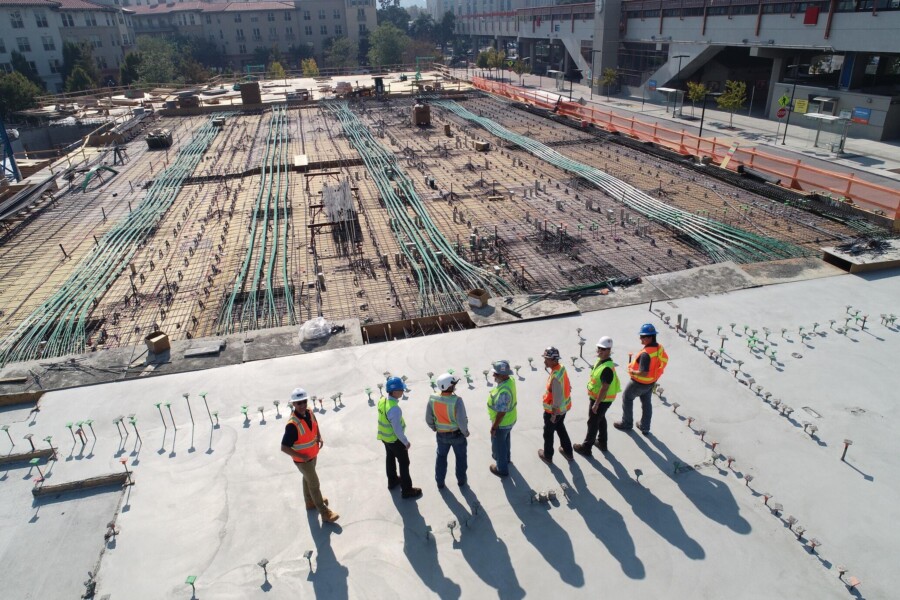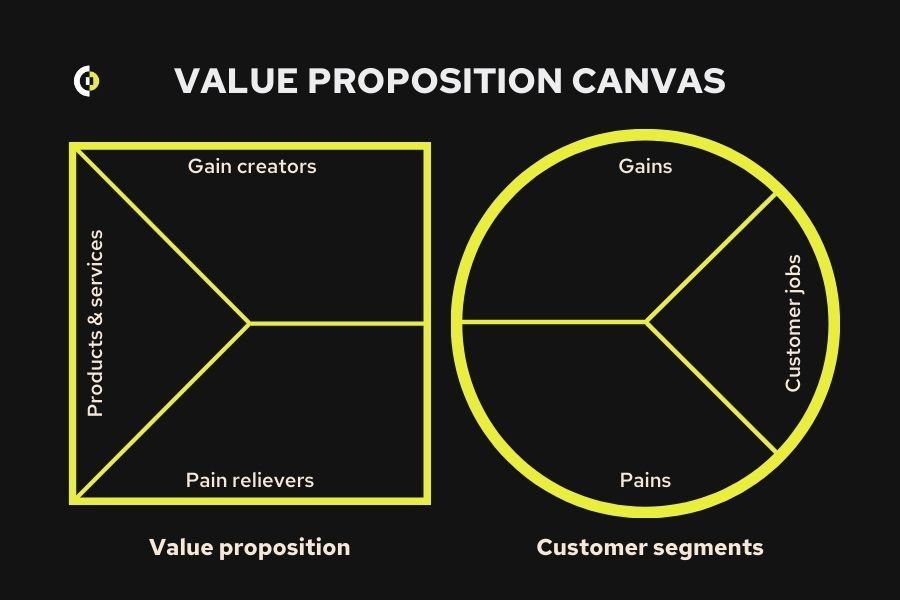Embarking on a software development project and aiming for precise cost estimation? Navigating the intricacies of software development cost estimation can be daunting, especially given the alarming statistics — 45% of projects exceed their budget, delivering 56% less value.
In software development, a critical concern revolves around cost considerations. Clients seek clarity on when a project will be completed and its associated expenses. While there’s no one-size-fits-all cost definition, this article sheds light on the pivotal factors influencing software development costs. It delves into the four primary methods of cost estimation, explores key influencing factors, and outlines a pragmatic approach and questions you should ask yourself to ensure an accurate estimation of your development costs.
Why Accurate Software Development Cost Estimation is Crucial
Software development cost estimation is notoriously challenging, with budget overruns being the norm. Despite the inherent difficulty, striving for an accurate estimate is crucial as it helps:
- Set realistic expectations for project costs to manage the outlook of stakeholders and clients effectively.
- Identify budget-driving areas, allowing for cost-reduction strategies.
- Uncover risks and opportunities early in the development process for better planning.
- Ensure sufficient resources are allocated before initiating work.
A rough estimate might suffice depending on priorities, while more detailed data points could be necessary for a highly accurate estimate. The article explores the main methods of software development cost estimation to empower you to make informed decisions based on your project’s unique needs.
Main Methods of Cost Estimation
Parametric Cost Estimation
This technique uses parameters like project size, complexity, developer count, and estimated duration to generate development cost estimates. It’s valuable for quick estimates, especially when speed is crucial. However, its accuracy depends on well-defined scopes and inputs, which might not be available early in the project.
Pros:
- Allows comparison of different approaches.
- Can provide precise estimates with a well-defined scope.
Cons:
- May oversimplify for complex projects.
- Accuracy depends on a precisely defined scope.
Analogous Cost Estimation
Reliant on historical data from similar projects, this method provides estimates based on past project costs, adjusted for differences. It’s faster but requires a similar reference project for accuracy.
Pros:
- Easier to perform with past project data.
- Faster and doesn’t need detailed project plans.
Cons:
- Accuracy relies on a similar past project.
- May require additional effort to gather past project data.
Top-Down Cost Estimation
The Top-Down estimation method is the most frequently utilized approach for software development project estimation. The Top-Down estimation involves breaking down the project into smaller parts, each assigned a portion of the total budget. It is particularly effective in the early stages of a project or when dealing with unknowns.
Pros:
- Quick estimates without diving into micro details.
- Checks alignment with company goals and budget from the start.
- Stakeholders grasp the big picture without technical details.
Cons:
- May lack precision as it doesn’t consider all small details.
- Possibility of overlooking important tasks due to a focus on a high level.
- General nature may overlook cost overruns in specific tasks.
Bottom-Up Cost Estimation
This technique analyzes tasks and activities, breaking the project into smaller components. Each task’s resources and costs are estimated and aggregated to calculate the total development cost. While flexible and accurate, it can be time-consuming.
Pros:
- Provides accurate estimates considering all tasks.
- Flexible, allowing for varied levels of detail.
Cons:
- Time-consuming, requiring significant resources.
- Estimates can vary based on estimator bias.
Steps to Estimate Software Development Costs Accurately
#1 Craft a Project Brief and High-Level Modules Map
Initiate the estimation process with a project brief outlining the software’s purpose, audience, and functionality. Develop a high-level modules map detailing databases, algorithms, user roles, UI, infrastructure, feature-specific modules, and 3rd party integrations.
#2 Research and Select Technologies
Research technologies aligning with your project’s needs. Validate their suitability by considering costs, open-source options, and long-term maintenance. Explore building blocks like open-source components for cost-effective solutions.
#3 Draft Software Requirements Specification (SRS) Document
Define the product’s summary, scope, audience, assumptions, dependencies, functional and non-functional requirements, and acceptance criteria. The SRS ensures a shared understanding among the project team and stakeholders.
#4 Create Low-Fidelity UI Wireframes
Enhance cost estimate accuracy by sketching low-fidelity UI wireframes. These provide a preliminary view of your interface, aiding development teams in understanding your vision. Collaborate with the team for input and be open to modifications.
#5 Design High-Fidelity UI Prototype
To refine accuracy, progress from low-fidelity wireframes to a high-fidelity UI prototype. This offers a detailed representation of the user experience, uncovering potential technical and design issues early in the process.
#6 Create a Work Breakdown Structure (WBS)
Improve estimate precision by developing a WBS, listing all project tasks with cost estimates. The WBS aids in building timelines, monitoring progress, and identifying potential budget overruns.
Tips to Prevent Budget Overruns
- Align on project scope early to avoid scope changes.
- Consult experienced vendors for accurate project estimates.
- Include contingencies in the budget for unexpected costs.
- Define project milestones, breaking the project into manageable deliverables.
- Regularly monitor progress and costs, updating estimates as parameters change.
- Adopt proven development strategies like Agile, Scrum, and DevOps for efficiency.
Software Development Cost Factors
#1 Research and Planning
The depth of research and planning significantly influences costs. More comprehensive research incurs higher expenses.
#2 Technology Choices
Technology choices impact costs, considering maintenance, training, and customization expenses.
#3 Complexity of the Project
Project complexity, influenced by functional and non-functional requirements, affects development time and resources.
#4 UI/UX Requirements
UI/UX scope can be a major cost factor, involving user research, persona development, wireframes, and prototypes.
#5 Hiring Model
Choosing between in-house, freelancers, or outsourcing affects costs, with full-service outsourcing often providing cost savings.
#6 Development Team Location
The outsourcing location influences the rates for developers, and there are differences across Asia, Eastern Europe, Western Europe, and the US.
#7 Support and Maintenance
Post-launch support and maintenance contribute to overall costs, requiring budget considerations.
Average Cost of Software Development
Simple Software
- Limited features
- Simple UI
- No third-party integrations
- Single-platform optimization
- Time frame: 1-2 months
- Cost: $5k – $15k USD
Medium Complexity Software
- Robust feature set
- Custom UI/UX
- Third-party integrations possible
- Multiple platform optimization
- Time frame: 2-6 months
- Cost: $15k – $45k USD
High Complexity Software
- Multiple complex features
- Custom UI/UX
- Third-party integrations likely
- Enterprise-level requirements
- Multiple platform optimization
- Time frame: 6+ months
- Cost: $50k+ USD
Estimating software development costs is a complex yet crucial task. By understanding methods, following a systematic approach, and considering influencing factors, you can achieve a more accurate estimate, setting the stage for a successful and well-budgeted software development project.
Essential Questions to Shape Software Estimation Understanding
When initiating the software estimation process, collecting comprehensive information about the project is essential. Consider incorporating the following questions:
#1 Core Problems and Challenges
- What problems does your app aim to solve?
- What are the core challenges or issues the app addresses?
- What pain points or inefficiencies are you targeting?
#2 Desired Solution
- What type of solution are you looking to achieve (mobile app, website, PWA, enterprise software, etc.)?
#3 System Interactions
- How will the system interact with other systems?
- Are there specific integration points, third-party systems, or APIs that need consideration?
#4 User/Customer Focus
- Who are the users/customers?
- Have you defined user personas and their goals?
#5 Integration Requirements
- Are there any integrations required?
- Describe user types, needs, permissions, and functionality requirements for access control.
#6 UI/UX Design Specifications
- What are the main requirements for UI/UX design?
- Should it be a simple or complex customized design?
- Are there any specific design elements or prototypes to share?
#7 Product Benefits and Advantages
- What sets the product apart in terms of benefits and competitive advantages?
- What features, capabilities, or value propositions make the product attractive to customers?
The Crucial Role of Team Structure in Software Development Cost Estimation
Establishing a well-structured development team is crucial for the success of your software project. This involves defining key roles within the team, including Software Developer, QA Engineer, Project Manager, Business Analyst, UI/UX Designer, and DevOps Engineer. Each of these roles plays a vital part in the project’s lifecycle.
This inclusive approach taps into diverse expertise, ensuring a more comprehensive and accurate estimation. By engaging team members from different specialties, you mitigate the risk of biases and oversights, fostering a collaborative environment that enhances the precision of your project estimates.
To Wrap Up
Effectively managing software development cost estimation is crucial for project success, considering the prevalent issue of budget overruns. This article provides valuable insights, enabling both clients and development teams to improve their understanding of software development costs and thereby promote successful and well-budgeted projects.
At Sipod, we redefine the conventional client-vendor dynamic by fostering genuine collaboration. Engaging with us brings a myriad of benefits outlined in our strategic partnership model. Picture Sipod not merely as a service provider but as an extension of your team, an essential contributor to your growth and innovation. Our strategic partnership model transcends the typical staff augmentation, offering a committed team seamlessly integrated into your organization.
Reach out to us today, and let’s discuss how our collaborative approach, including helping estimate the budget for your software development project, can enhance and strengthen your endeavors.
Tags:





